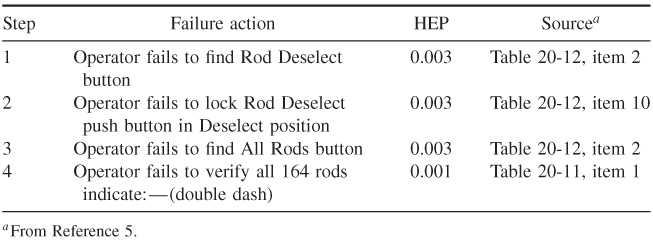10.4 Quantifying Human Error Probability (HEP)
HEP is defined as the probability that when a given task is performed, an error will occur. This should not be confused with “human reliability,” that is, the probability that the task will be correctly performed.
Like other parts of the HRA, there are several methods for quantifying the HEP. One of the most common methods is through use of the technique for human error rate prediction (THERP) tables provided in NUREG/CR-1278, “Handbook of Human Reliability Analysis with Emphasis on Nuclear Power Plant Applications.” These tables provide HEPs and the other necessary information to quantify HEPs in many activities.
If HEP values are not in NUREG/CR-1278 then other sources that may be used are as follows:
- Historical Data. This could be for the specific activity or similar activities.
- Expert Advice. Personnel with experience in performing HRAs can be consulted to obtain their estimation of the HEP.
- Testing. Simulations of the activity can be performed and data collected.
- Other Literature. There have been numerous PRAs performed on various processes. Data for same/similar activities can be used.
The HEP value used for the step must be recorded, including the source of the HEP. This can be done on the HRA event tree or in table format.
THERP tables will be used as a source to continue the example (Table 10.2).
Table 10.2 THERP Tables

Get Risk Assessment: Tools, Techniques, and Their Applications now with the O’Reilly learning platform.
O’Reilly members experience books, live events, courses curated by job role, and more from O’Reilly and nearly 200 top publishers.

